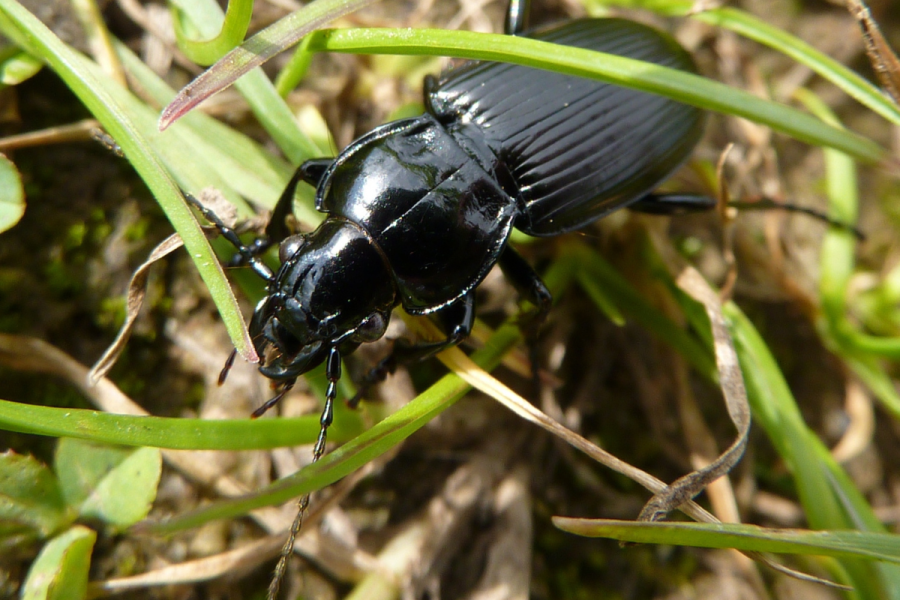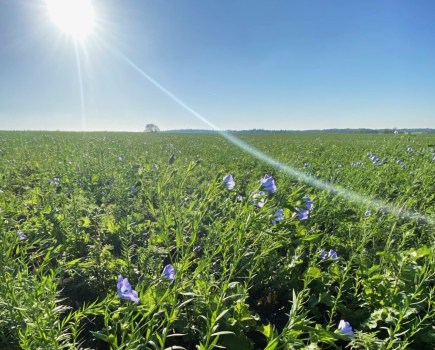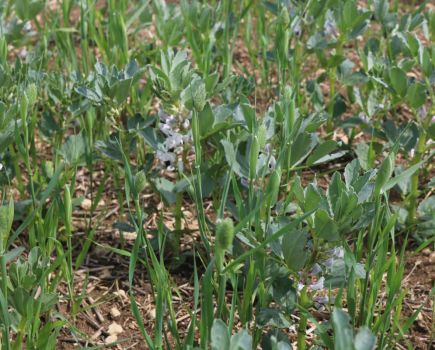Aside from the notorious oilseed rape munching variety, beetles mostly act as beneficial predators. CPM learns more about carabids and what they can offer, from weed seed consumption to slug control.
“In many ways they’re the background heroes, playing a pivotal role in ecosystem preservation.”
By Janine Adamson
In the world of arable farming, there’s one type of beetle which hogs all of the limelight, namely thanks to its penchant for gorging on a valuable break crop. However, there’s much more to this family of insects than first meets the eye.
From weevils to ladybirds, a long list forms the order Coleoptera, otherwise known as beetles. But one specific type is commended for its beneficial activity in field agriculture – carabids, or ground beetles.
With long legs and powerful mandibles it could easily be argued that carabids make for elite predators – whereas the adults hunt for insects at ground level and sometimes climb foliage, the larvae burrow and feed on soil-based pests. And certain species aren’t fussy at all, sometimes divulging in an omnivorous diet including weed seeds (seed predation).
Entomologist Dr Kelly Jowett from Rothamsted Research has completed a PhD on the modelling of carabid beetle distributions in farm landscapes, looking at their role as natural-enemy pest control. She says she often describes them as the hyena of the beetle world.
“In farmland, carabids eat a range of crop pests from aphids to slugs which makes them the ideal control agent. There are around 30 species found in British farmland, which demonstrate different behaviours and environmental tolerances.
“Not just an abundance, but also a diversity of carabid species may be key to effective pest control. To boost numbers we have to provide areas to feed, breed and shelter, while a diversity of crop and non-crop habitats will encourage a range of species,” she explains.
In terms of areas to feed and shelter, this involves familiar features of many farming landscapes – beetle banks, conservation headlands and flower margins. “Semi-natural areas are important to provide the invertebrate and plant resources for all-year-round food.
“These resources should be close to productive areas so carabids can move quickly into the crop to eat the pests they prefer. Better yet, providing resources in crop areas by measures such as undersowing or companion cropping may encourage them to spend more time in field centres.” says Kelly.
When breeding, carabids lay their eggs in the soil which hatch into larvae before pupating and emerging into adult beetles. Not only do the larvae remain active in winter, but because they require a lot of protein to grow, they predate on more pests than the adults. “To help larvae to develop undisturbed, minimum or low tillage systems may be useful,” explains Kelly.
Research has been taking place to further understand farmland carabid behaviour through a number of projects delivered during the past 20 years. Dr Ben Woodcock from the UK Centre for Ecology & Hydrology (UKCEH) says although farmers have long been aware of the importance of beetles and other predatory invertebrates, what’s been missing is how this translates to a measurable result to inform management decisions.
“It’s been important to try and understand whether boosting the numbers of ecosystem service providing insects, such as carabid beetles, can have a positive impact on crop yield and profit margins,” says Ben.
To illustrate, in one UKCEH trial at a 900ha conventional arable farm, 0% (control), 3% or 8% of land was taken out of production and converted to wildlife habitats such as flower field margins and corners. The five-year experiment showed that while establishing field margins has clear benefits for wildlife, the availability of precision yield mapping means changes in yield resulting from beneficial insects can also be evaluated.
“In the control fields, where no attempt was made to support beneficial insects, yields remained consistent over the five-year period. However, where 3% and 8% of land were used to support populations of predatory insects, parasitoids and insect pollinators, yield gradually increased.
“It took 3-4 years, but after this, yields were on average higher than that seen when compared with the control. This was true even when we accounted for the loss of land for habitat creation and shows that these systems are compatible with conventional agricultural practices,” explains Ben.
He believes the future lies in a data-driven approach to beneficial insect management using monitoring and thresholds, not dissimilar to conventional pest and disease management. “It’s understanding the land’s capacity to naturally control pests which can then inform management decisions.
“Knowing where natural predators are within the farming landscape and at what level helps to understand whether there’s the potential to offset insecticidal intervention. Although beneficials can’t wholly solve an insect pest problem, they can offer a background reduction of risk that all farming systems can take advantage of,” says Ben.
Monitoring carabid beetles and their activity is something which has intrigued mixed farmer Becci Berry, and she’s now addressing that curiosity through involvement with the SLIMERS (Strategies Leading to Improved Management and Enhanced Resilience Against Slugs) project, led by the British On-Farm Innovation Network (BOFIN).
As a nominated ‘Slug Sleuth/Beetle Scout’, Becci will use pitfall traps to monitor beetle populations to compare with the slug pressure on her 365ha farm. This is useful information for the project because certain types of carabids are natural slug predators, namely the violet (Carabus violaceus) and black clock (Pterostichus madidus) species.
“We’ve had a beetle bank on the farm for around 20 years but it’s been left alone with minimal management. I’m keen to improve my beetle knowledge so involvement with SLIMERS may help to tweak the bank and make more of that resource,” she says.
Becci is also looking at other ways to maximise biodiversity through optimising the farm’s shelter belts and flower margins. “There’s so much we can’t change at the farm such as soil type, it’s important to instigate the changes we can control.”
Beyond their scope as crop pest predators, carabids play a valuable role in the food chain in their own right, being consumed by farmland birds and small mammals. Professor John Holland says this has an additional knock-on effect. “Around 90% of weed seeds are eaten by mammals, birds and insects.
“Skylarks and grey partridge in particular eat beetles and this is where habitat management can contribute – maintaining more open areas such as the SFI arable plants option (cultivated martins and plots for arable plants), to help the birds to find food,” he says.
John believes as with pollinators, providing a wide range of environments is an effective approach for boosting beetle populations. “Beetles can be very specialised and prefer certain habitats, whether that be an open structure or scrubby grasses and shrubs. Even woodlands and deadwood stacks can prove beneficial.
“The greater the diversity of habitat, the greater the chance of a diverse and robust beetle population. It’s also important to remember that populations of individual species can be cyclical – high in one year and lower the next while also varying in their distributions between and within fields. All of which demonstrates the importance of diversity to compensate for this inconsistency.”
According to John, because less is known about Coleoptera, they aren’t always appreciated. “In many ways they’re the background heroes, playing a pivotal role in ecosystem preservation. Carabids are also capable of conducting specialist pest control, locating patches of prey and destroying them as shown in a number of studies conducted by the Game and Wildlife Conservation Trust (GWCT),” he says.
To help to improve understanding, Kelly is involved with further work to make the identification of carabids easier, including publishing an ID guide and a new smart phone application, the latter which is in development stage.
These tools are being created because a survey undertaken by Rothamsted Research indicated that farmers would be willing to monitor beetle activity on their land if they had relevant supporting advice.
But equally, Kelly says there is plenty of work left to be done. “If we can better understand which habitats are most beneficial for different beetles, it’ll be possible to tailor farmland habitats to ensure a good selection of predatory species that suit a farm’s particular pest problem.”
Farmers can take part in beneficial beetle research in the AgZero+ project and help to gather this data while learning more about carabids on their own farm. For information, visit https://agzeroplus.org.uk/tools-farmers
This article was taken from the latest issue of CPM. For more articles like this, subscribe here.
Sign up for Crop Production Magazine’s FREE e-newsletter here.




